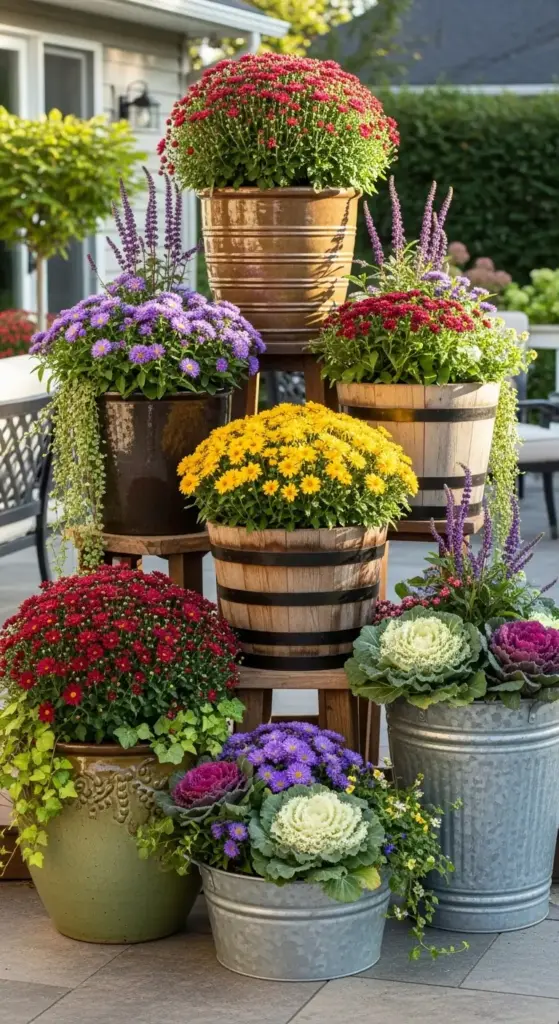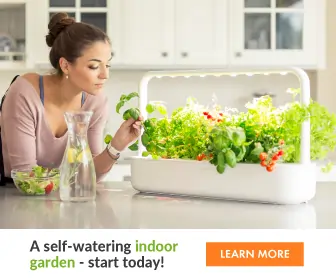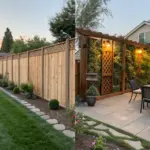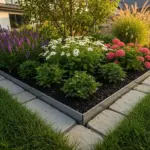7. Seasonal Color-Burst Container Garden

My first container garden was three sad petunias in matching terra cotta pots lined up on my patio like soldiers. They looked boring, died by August, and taught me absolutely nothing about the incredible potential of container gardening.
Now my container displays stop traffic and change completely four times a year.
Container Selection That Creates Real Visual Drama
Container gardening success starts with choosing the right pots, and I learned this lesson the expensive way. Size, material, and arrangement matter way more than I ever imagined.
Large containers are game-changers for impact. I use pots that are at least 16 inches wide – anything smaller looks insignificant and dries out too quickly in summer heat.
Odd-numbered groupings create natural-looking displays. I arrange containers in groups of 3, 5, or 7, with different heights and sizes for visual interest.
Mixed materials add texture and prevent that “matching set” look that screams amateur. I combine glazed ceramic, weathered wood, and galvanized metal containers.
Drainage considerations can make or break your plants. Every container needs multiple drainage holes – I drill extra ones if needed because soggy roots kill more container plants than anything else.
Weight distribution matters more than you’d think. My heaviest containers go on sturdy surfaces, and I use plant caddies with wheels for anything I need to move seasonally.
The container should complement the plants, not compete with them for attention.
Seasonal Rotation Strategies for Constant Color
Year-round container color requires planning like a Broadway show – you need different acts ready to go on stage. I learned to think in seasons rather than individual plants.
Spring staging starts in late winter when I plant cool-weather flowers like pansies, primrose, and sweet alyssum. These handle light frosts and give me color when everything else is still dormant.
Summer swapout happens in late May when I replace spring flowers with heat-lovers like zinnias, marigolds, and coleus. I keep the same containers but completely change the plant palette.
Fall transition brings mums, ornamental kale, and asters into the spotlight. The key is making changes before summer plants start looking tired.
Winter interest relies on evergreen plants, colorful stems, and seasonal decorations. I add holly, pine boughs, and red-twig dogwood cuttings to keep containers interesting.
Succession planting within seasons keeps displays fresh. I replant containers every 6-8 weeks during growing season rather than trying to nurse struggling plants.
Soil Preparation That Actually Feeds Your Plants
Container soil is completely different from garden soil, and this mistake cost me dozens of plants before I figured it out. Regular garden soil turns into concrete in pots.
High-quality potting mix is worth every penny. I use commercial mixes with perlite and vermiculite for drainage and water retention. Cheap potting soil is a false economy.
Fertilizer incorporation happens at planting time. I mix slow-release fertilizer granules into the potting mix so plants get steady nutrition all season long.
Soil amendments improve performance dramatically. I add compost for nutrition and water-absorbing crystals to help containers stay moist longer during hot weather.
Container depth determines root space and plant health. I use containers at least 12 inches deep for most flowers, deeper for plants with large root systems.
Fresh soil annually prevents disease buildup and nutrient depletion. I completely replace potting mix each spring rather than trying to reuse old soil.
Weather Protection Strategies That Save Plants
Container plants are more vulnerable to weather extremes than ground-planted flowers. I learned this during my first brutal summer when half my containers fried.
Heat protection involves strategic placement and watering schedules. I move containers to areas with morning sun and afternoon shade during the hottest months.
Wind barriers prevent containers from drying out and toppling over. I group containers together and use larger plants to shelter smaller ones from strong winds.
Frost protection extends the growing season significantly. I cover containers with frost cloth or move them to protected areas when temperatures drop.
Drainage management prevents both drought stress and root rot. I elevate containers on pot feet or bricks to ensure excess water can escape freely.
Mulching containers conserves moisture and regulates soil temperature. I use decorative mulch like cocoa hulls or small bark chips for both function and appearance.
Weather protection is about creating microclimates that help plants thrive despite challenging conditions.
Budget-Friendly Container Options That Look Expensive
Container gardening doesn’t have to break the bank. I’ve found amazing alternatives to expensive designer pots that look just as good.
Thrift store finds can be transformed into gorgeous planters. I’ve used old colanders, ceramic bowls, and even boots as unique containers after drilling drainage holes.
DIY concrete planters cost about$10 each to make and look like expensive designer pieces. I use plastic bowls as molds and add texture with leaves or fabric.
Repurposed items make conversation-starting containers. Old wheelbarrows, wooden crates, and galvanized buckets work perfectly for rustic or farmhouse styles.
End-of-season sales at garden centers are goldmines for containers. I buy pots at 75% off in fall and store them for next year’s displays.
Hypertufa containers made from concrete, peat moss, and perlite look like expensive stone planters but cost almost nothing to make.
Spray paint transformations can update tired containers for just a few dollars. I use plastic-specific paint to refresh faded pots every few years.
Troubleshooting Container Garden Disasters
Container gardening problems are different from regular garden issues. I’ve made every mistake possible and learned solutions the hard way.
Watering issues kill more container plants than pests and diseases combined. Containers dry out faster than you expect but can also become waterlogged if drainage is poor.
Root binding happens when plants outgrow their containers. I check root systems monthly and move plants to larger pots when roots start circling.
Fertilizer burn occurs when you use too much fertilizer in the confined space of a container. I learned to use half-strength liquid fertilizer more frequently.
Pest concentration can be worse in containers since beneficial insects have less habitat. I inspect plants weekly and treat problems before they spread.
Soil compaction develops over time as potting mix breaks down. I fluff the soil surface regularly and add fresh mix as needed throughout the season.
Temperature fluctuations stress container plants more than ground-planted ones. Dark containers get especially hot and can literally cook plant roots.
Advanced Container Arrangement Techniques
Professional-looking container displays follow design principles that most people don’t know. I learned these tricks from studying high-end garden centers.
Thriller, filler, spiller is the classic formula. One dramatic upright plant (thriller), medium plants to fill space (filler), and trailing plants to cascade over edges (spiller).
Color echoing ties multiple containers together visually. I repeat the same colors in different containers but vary the plant combinations to avoid monotony.
Height variation creates dynamic displays. I use plant stands, overturned pots, or different container sizes to create levels and visual interest.
Seasonal transitions can be gradual rather than complete overhauls. I remove spent plants and add new ones while keeping successful elements.
Focal point creation draws attention to your best containers. I place my most spectacular displays where they’ll be seen from indoors or main walkways.
Year-Round Container Maintenance Schedule
Container garden maintenance follows a different rhythm than traditional gardens. I’ve developed a seasonal schedule that keeps displays looking their best.
Spring preparation starts in March when I clean containers, replace soil, and plan seasonal displays. This is when I do major container reorganization.
Summer maintenance focuses on daily watering, weekly deadheading, and monthly fertilizing. Container plants need more frequent attention during hot weather.
Fall cleanup involves removing spent annuals, planting winter interest plants, and protecting tender perennials. I also move containers to winter locations.
Winter care is mostly about protecting containers from freeze damage and planning next year’s displays. I cover drainage holes to prevent ice formation.
Monthly assessments help me catch problems early and make adjustments before plants suffer. I photograph displays to track what works and what doesn’t.
The biggest revelation about container gardening? It’s like having a completely flexible garden that you can rearrange whenever inspiration strikes. Bad weather? Move containers to shelter. Want a different look? Swap out a few pots.
My container displays now provide more color and interest than my old in-ground flower beds ever did. Plus, I can take my garden with me if I ever move – try doing that with a traditional landscape!
Container gardening has taught me that limitations often spark the most creativity. Working within the constraints of pots has made me a better designer and a more attentive gardener.
Conclusion
These seven creative flower garden ideas prove that you don’t need a green thumb or unlimited budget to create something absolutely stunning! From the romantic cottage garden that’ll make your neighbors green with envy, to the space-saving vertical display perfect for your city apartment – there’s an option here that’ll work beautifully for your lifestyle and space.
The best part? Each of these designs can be adapted to your specific climate and growing conditions, whether you’re dealing with Seattle’s rain or Dallas’s heat. Start with just one idea that speaks to you, and I guarantee you’ll be planning your next garden project before the first flowers even bloom.
Ready to transform your outdoor space? Pick your favorite concept and start planning – your dream flower garden is just a season away! Don’t forget to share your garden transformation photos with fellow gardening enthusiasts – we all love a good before-and-after success story.









GIPHY App Key not set. Please check settings